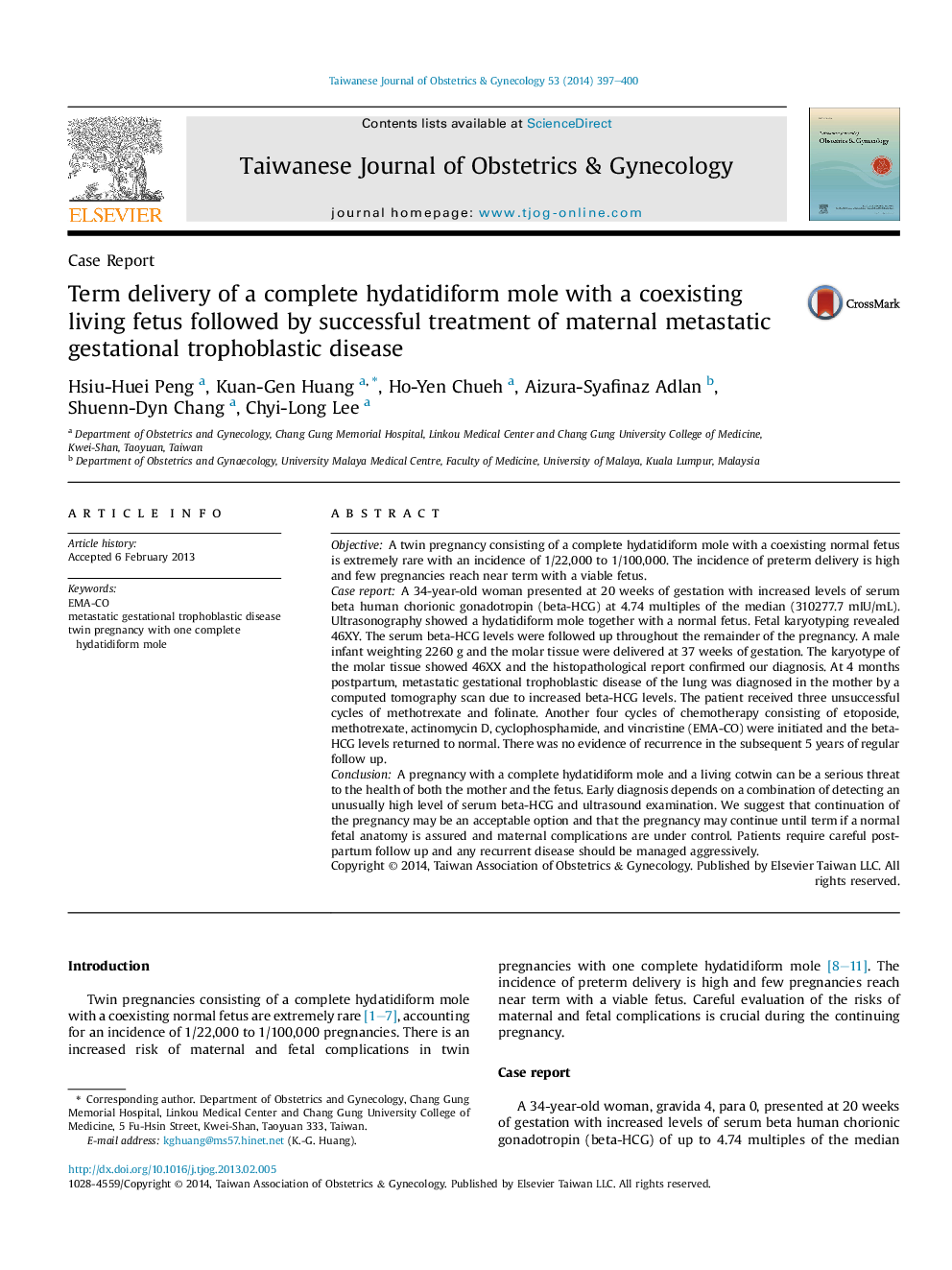| Article ID | Journal | Published Year | Pages | File Type |
|---|---|---|---|---|
| 3975214 | Taiwanese Journal of Obstetrics and Gynecology | 2014 | 4 Pages |
ObjectiveA twin pregnancy consisting of a complete hydatidiform mole with a coexisting normal fetus is extremely rare with an incidence of 1/22,000 to 1/100,000. The incidence of preterm delivery is high and few pregnancies reach near term with a viable fetus.Case reportA 34-year-old woman presented at 20 weeks of gestation with increased levels of serum beta human chorionic gonadotropin (beta-HCG) at 4.74 multiples of the median (310277.7 mIU/mL). Ultrasonography showed a hydatidiform mole together with a normal fetus. Fetal karyotyping revealed 46XY. The serum beta-HCG levels were followed up throughout the remainder of the pregnancy. A male infant weighting 2260 g and the molar tissue were delivered at 37 weeks of gestation. The karyotype of the molar tissue showed 46XX and the histopathological report confirmed our diagnosis. At 4 months postpartum, metastatic gestational trophoblastic disease of the lung was diagnosed in the mother by a computed tomography scan due to increased beta-HCG levels. The patient received three unsuccessful cycles of methotrexate and folinate. Another four cycles of chemotherapy consisting of etoposide, methotrexate, actinomycin D, cyclophosphamide, and vincristine (EMA-CO) were initiated and the beta-HCG levels returned to normal. There was no evidence of recurrence in the subsequent 5 years of regular follow up.ConclusionA pregnancy with a complete hydatidiform mole and a living cotwin can be a serious threat to the health of both the mother and the fetus. Early diagnosis depends on a combination of detecting an unusually high level of serum beta-HCG and ultrasound examination. We suggest that continuation of the pregnancy may be an acceptable option and that the pregnancy may continue until term if a normal fetal anatomy is assured and maternal complications are under control. Patients require careful postpartum follow up and any recurrent disease should be managed aggressively.
